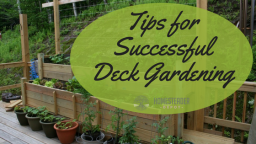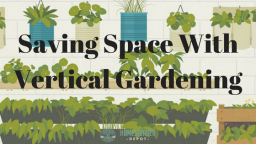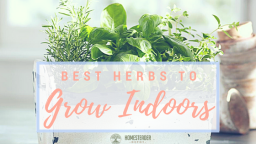You don’t need to live on a farm or even in the country in order to be a homesteader. In fact, even people who reside in the suburbs or even the city can homestead in their own ways. Homesteading generally means using the land to provide for yourself and your family in one way or another. You can get a little creative with this and find ways to make it work no matter where you live, even if all that you have is a small apartment. Here are some great suggestions that you can utilize. Build off of them and find ways to make your own urban homestead.
Set Up a Clothesline
Yes, drying clothing outdoors is a practice that many homesteaders partake in. A clothesline is easy to set up when you have a yard of any particular size, as well as a fence, post, or even tree to anchor it on. City living makes this a bit trickier, especially if you lack a yard. Thankfully, they sell retractable clotheslines that you place on a balcony. When you’re done, just roll them up. There are also devices called “airers” that are meant to do the same thing, only they stay indoors.
NEVER Buy Laundry Detergent Again…Try These New Power Laundry Magnets>>>
Start a Garden
Gardening is an essential part of homesteading. You need to grow your own food in one way or another. Again, this all comes down to the size of your yard. Even some city dwellers may have enough land for a small garden plot. They just need to use that space wisely. Alternatively, plants can be grown on a porch, a back deck, or even an apartment balcony. If you’re truly landlocked, find a community gardening program in your area and then join it. This way, you can fulfill this general homesteading practice.
Join a Composting Program
Composting is tricky when you’re in the city. Compost bins tend to get a bit smelly, which can annoy your neighbors. With that said, there are still programs that you can join, including city-wide ones where they’ll collect your food scraps and use them to create a large batch of compost. Of course, not all cities do this, and if yours doesn’t, why not convince them to start one? Sometimes you have to take homesteading into your own hands.
Does CBD REALLY Live Up to the Hype? Learn More Here>>>
Raise Some Animals
Obviously, your animal choices are limited based on your location. Some cities allow people to keep chickens in their backyards, while others have strict laws against this practice. If you’re lucky enough to live in an urban location that allows chickens, then, by all means, build or purchase a coop and buy a few chickens to raise. You’ll get plenty of fresh eggs and will learn quite a bit from the chickens themselves, as these animals all have very interesting personalities. However, if you’re in an apartment, you obviously can’t have a chicken coop. You’re limited to cats and dogs, depending on the rules in your lease. While you can’t obtain food from them like your chickens, you still receive many of the mental benefits of raising a pet. This is a good thing.
As you can see, there are a number of things that you can do in order to be an urban homesteader. You just need to get a little creative and find ways around the problem. For example, if you live in an apartment, you can start a container garden and have a cat or two. If your city lot is large enough for a garden, then feel free to start one. There are so many options available to you if you know where to look for them.










